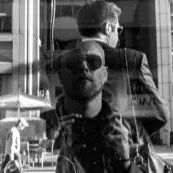Diane Arbus
New York photographer Diane Arbus was known for her powerful and emotional images of the outsiders in society, including the ugly, different or bizarre, as well as ordinary people she met on the streets.
Arbus was regarded as a pioneer in flash photography, photographing her subjects close up in daylight. She would use a flash to isolate her subjects’ images and explore the themes of dysfunction and relationships.
Arbus’ Early Life
Born in 1923 in New York City to wealthy Jewish storeowners, Arbus ended her own life in New York’s Greenwich Village in 1971. A movie, Fur: An Imaginary Portrait of Diane Arbus (2006), features Nicole Kidman acting in a fictionalized version of Arbus’ life.
Arbus lived a rich and privileged childhood in Central Park West. While she attended the best schools, she was often in the shadow of her older brother, the poet Howard Nemerov.
At 14, she fell in love with Allan Arbus, now known for his recurring role as Sidney, the Army psychologist in the M*A*S*H television series. Arbus married him at age 18. It was through Allan Arbus that she first discovered photography from his work as a photographer in the Army. The two started a fashion photography business that lasted 20 years, with Allan Arbus behind the camera and Diane Arbus as the stylist. During this time, the couple had two daughters, Doon and Amy.
Arbus Branches Out
Arbus began to take her own photographs by the late 1950s, studying under Austrian-born American photographer Lisette Model at the New School in New York. Influenced by Model’s straightforward “shoot from the gut” approach to photography, Arbus switched from 35mm cameras to a square medium format camera with a waist level viewfinder.
With this new equipment, she was able to talk and create an interaction with her subjects by merely observing them in the viewfinder, not looking at them directly. This enabled Arbus to vividly capture and record everyday life. She was also able to gain access to the odd and often unapproachable subjects, such as prostitutes, transvestites and nudists. Many claim her interaction with and acceptance of her subjects set her work apart.
Arbus Breaks into Photojournalism
Soon after this, Arbus separated from her husband and started work in photojournalism. Her work resulted in striking images for magazines, including Esquire, New York Times Magazine, The Sunday Times Magazine (London), New York Magazine and Newsweek, among others.
Arbus received two Guggenheim grants, one in 1963 and a second in 1966. By 1964, the first show of her works debuted at the Museum of Modern Art (MoMA) in New York. She achieved another milestone three years later when she was showcased with two other artists at the MoMA’s New Documents show.
Notable works include Child With Toy Hand Grenade in Central Park (1962), Jewish Giant at Home with His Parents in The Bronx, New York (1970), and Identical Twins, Roselle, New Jersey (1969). This last photo pictured young twins standing together, one frowning and one smiling. This image was later mirrored in the film, The Shining, showing twins in the same pose. This photo was 2004’s 10th most expensive photograph, selling for $478,400.
Unfortunately, her success as a photographer did not balance the bouts of depression Arbus began to suffer. In July 1971, she ended her life, taking barbiturates and cutting her wrists. She was 48.
A book, Diane Arbus: An Aperture Monograph, was published after her death, showcasing her work and unmistakable style. The book sold more than 100,000 copies and has been reprinted 12 times. A MoMA retrospective also traveled throughout North America, attracting over seven million viewers.



